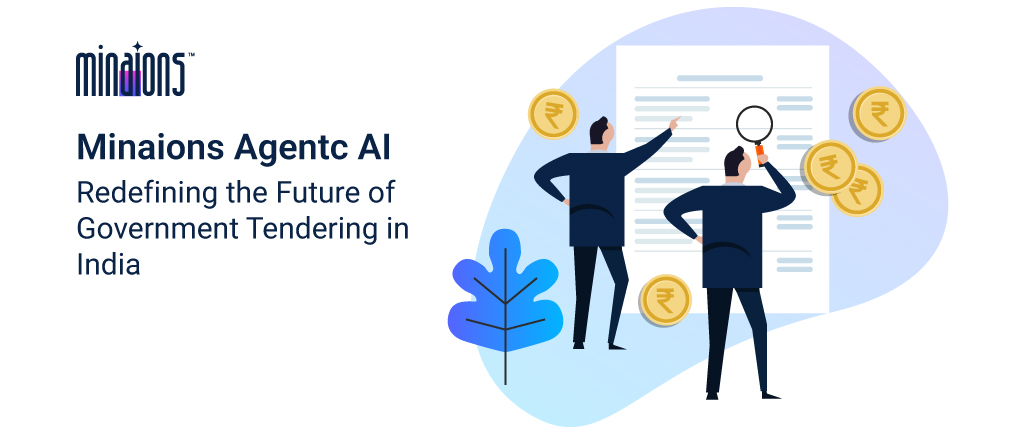How to Prepare a Winning Tender (Step by Step)

Preparing a winning tender requires more than just filling out forms, it’s a strategic process that involves careful planning, attention to detail, and team collaboration. From understanding the Request for Proposal (RFP) to ensuring full compliance and managing documentation, every step plays a critical role in standing out from the competition. In this blog, we’ll walk you through a step-by-step approach to tender preparation, including how to read RFPs effectively, build compliance checklists, and work collaboratively to create a strong, error-free submission that increases your chances of winning the bid.
Steps to Prepare a Winning Tender
Preparing a tender is a process that requires both precision and planning. Below are the key steps that help ensure your submission is complete, compliant, and competitive:
1. Understand the Tender and RFP Thoroughly
Start by reading the Request for Proposal (RFP) document carefully. Understand what the buyer is asking for—scope of work, timelines, eligibility, technical requirements, and financial terms. Take note of mandatory documents, evaluation criteria, and submission deadlines. Make a summary of key points to ensure nothing is missed later in the process. If anything is unclear, don’t hesitate to reach out for clarification (within the allowed time frame).
2. Check Eligibility and Go/No-Go Decision
Before investing time in preparation, confirm that your company meets all the eligibility conditions—experience, certifications, financial thresholds, and technical qualifications. If the tender requirements are out of scope or present high risk, it’s better to say “no” early. This Go/No-Go decision avoids wasted effort and keeps the team focused on winnable opportunities.
3. Create a Compliance Checklist
Use the RFP to build a detailed compliance checklist. Include all documents that need to be submitted—technical, financial, legal, and administrative. Double-check if any documents need notarization, specific formats, or signatures. A structured checklist ensures nothing is left out and helps track the status of each component during the preparation phase.
4. Assign Roles and Collaborate Effectively
Tender preparation is rarely a one-person job. Assign responsibilities across your team for example, one person handles documentation, another financials, and another writes the technical proposal. Use cloud-based tools or shared folders for real-time collaboration and version control. Set internal deadlines ahead of the actual submission date to account for reviews and last-minute changes.
5. Draft the Technical and Financial Proposals
The technical proposal should clearly demonstrate how your solution meets the buyer’s needs. Highlight past relevant work, team qualifications, and your unique approach. Ensure the language is clear, professional, and aligned with the buyer’s objectives.
The financial proposal must be accurate, well-formatted, and competitive. Follow the specified pricing format, and double-check calculations. Avoid underpricing if it affects quality delivery or overpricing that may hurt your chances.
6. Review, Proofread, and Validate
Once the draft is ready, review every document thoroughly. Look for spelling errors, formatting issues, missing information, or incorrect attachments. Ensure consistency across technical and financial sections. Ideally, have someone not involved in the drafting phase do the final review—it helps catch mistakes with a fresh perspective.
7. Submit as Per Instructions
Ensure you follow the submission instructions exactly whether it’s through an e-tender portal, email, or physical submission. Adhere to file format, naming conventions, and deadlines. Late or incorrectly submitted bids are often rejected without review, no matter how strong they are.
How Minaions Helps You Prepare a Winning Tender
Minaions simplifies the tendering process by offering an end-to-end workflow designed to reduce manual effort and improve accuracy. It begins by storing all essential company data, certificates, profiles, and past orders in a secure document management system (DMS). Based on this data, Minaions searches for relevant tenders and downloads them for your review. It then checks eligibility by comparing requirements with your stored information and generates a clear analysis report.
This helps teams quickly identify whether to proceed with the bid. Once confirmed, Minaions assists in preparing well-structured bid documents, significantly reducing the typical preparation time from 5–10 days to just 1–2 days. After submission, it supports portal-based bidding and even handles post-submission queries through RAG-enabled query resolution. With this streamlined process, Minaions ensures that every step from discovery to documentation and clarification is faster, more organized, and tailored for better success in government procurement.
Final thoughts
Preparing a successful tender doesn’t have to be overwhelming. With the right approach, clear RFP understanding, strong compliance practices, and effective team collaboration, you can significantly improve your chances of winning. Tools like Minaions further simplify the journey by automating tedious tasks, organizing documents, and ensuring no detail is missed.
From identifying relevant tenders to responding to post-submission queries, Minaions streamlines the entire process, making it faster and more reliable. As government procurement becomes increasingly competitive, using intelligent systems isn’t just an advantage; it’s a necessity. Equip your team with the right tools, and make every bid count.



